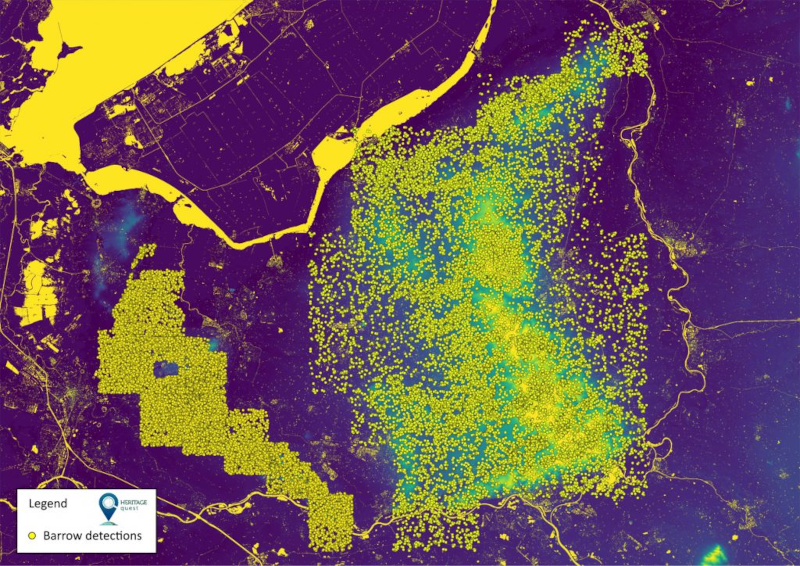What do you do when you have a lot of LiDAR data and not enough budget to slog through it? That’s the problem the Heritage Quest project was faced with — they had 600,000 LiDAR maps in the Netherlands and wanted to find burial mounds using the data. By harnessing 6,500 citizen scientists, they were able to analyze the data and locate over 1,000 prehistoric burial mounds, including many that were previously unknown, along with cart tracks, kilns, and other items of archaeological interest.
The project used Zooniverse, a site we’ve mentioned before, to help train volunteers to analyze data. The project had at least 15 volunteers examining each map. The sites date between 2,800 and 500 BC. Archaeologists spent the summer of 2021 verifying many of these digital finds. They took samples from 300 sites and determined that 80 of them were previously unknown. They estimate that the total number of sites found by the volunteers could be as high as 1,250.
This is a great example of how modern technology is changing many fields and the power of citizen science, both topics we always want to hear more about. We’ve seen NASA tapping citizen scientists, and we’ve even seen high school students building research buoys. So if you’ve ever wanted to participate in advancing the world’s scientific knowledge, there’s never been a better time to do it.















I once used zooniverse, and while the model of citizen scientists do something is interesting, the work is often a bit menial, especially once you reach the hundreds in analyzed datasets. Essentially, you become a factory worker for data processing.
And what’s your point?
The point is, a citizen scientist used to mean something. Lots of famous people were citizen scientists who did good science; for example, The Cavendish experiment (Henry Cavendish), first measurement of the gravitational force.
The modern term is misleading, perhaps “crowdsourcing” is a better description. The tasks people do do not require knowledge of science or the application of the scientific method – it could just as easily be done by mechanical turk.
Search the hackaday site for “seismic noise detector” for a good example of actual citizen science. Also, “techingredients” on youtube does citizen science.
Many people in science now believe that citizen science is impossible: all the easy results have been found, it’s too expensive to do science without a grant, and besides citizens don’t really know anything about science.
(Yes, there is a lot of pushback from researchers against non-researchers who claim they do actual science.)
The bad news is that the vast majority of science is, and always was, tedium. The historic “gentlemen scientist” myth is attractive, but skips over the boring data wrangling necessary.
Don´t react on AI generated comments !
AI would be a good solution to this problem.
I’ve noticed, in reading “science” papers vs “enthusiast” papers, that a lot of “science” IS slogging through the (ultimately) boring data and results like a factory worker. :-)
(First noticed WRT fireworks. An enthusiastic amateur will publish a formula with a note like “I found this to work well.” Shimizu or other more serious scientist will have a “triangle diagram” with carefully measured mixtures in all the directions that DIDN’T yield great results…)
How come we never see something like this of the United States?
I found that zooniverse was a great way to get children interesting in science because they could participate in real science without all of the usual barriers to doing so, and this leaves them with a lifelong positive interest in the field.
A grown-up version of connect the dots?
Yes, with maybe some more sinister real world applications?`
– cleaning a minefield
– finding mass graves
– identifying sink holes before they collapse and can do harm
Or unknowingly helping dictators track down dissidents.
What is the confidence level in these findings based on LIDAR analysis alone? There are claims that thousands of burial mounds were found, but I don’t see much information on how many of them have been confirmed.
Also, if a burial mound is “found” on somebody’s property in this manner, does it trigger restrictions on the owner’s use of the property or introduce any regulations? If so, these results had better be very accurate. I do realize that many or most of these particular findings were on public land, according to the article.